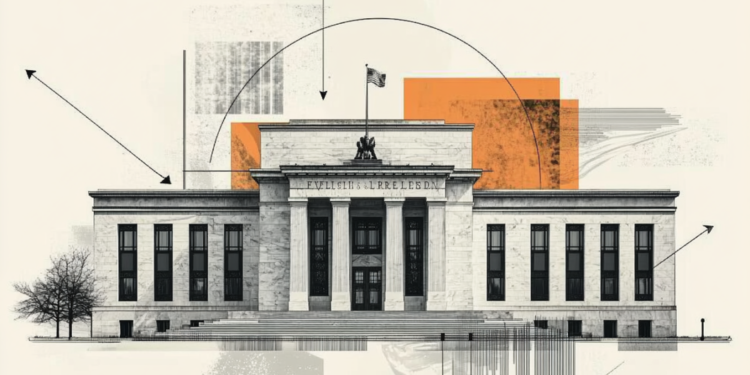In the heart of the Canadian Arctic, scientists and entrepreneurs brave subzero temperatures, high winds and blizzards to drill through sea ice and pump seawater to freeze it at the surface.
The group from British startup Real Ice is in Cambridge Bay, a small coastal village in Nunavut, to try to prove that they can cultivate and restore Arctic sea ice.
His ultimate plan is to thicken ice across more than 1.5 million square kilometers of the Arctic — an area more than twice the size of California — with the goal of slowing or even reversing summer ice loss, and by doing so This will help combat the man-made climate crisis.
It’s a bold plan, and one of many controversial geoengineering proposals to save the planet’s vulnerable polar regions, ranging from installing a giant underwater “curtain” to protect ice sheets to scattering tiny glass beads to reflect sunlight.
Some scientists and Arctic experts have criticized Real Ice’s methods as unproven on a large scale, ecologically risky and a distraction from tackling the root cause of climate change: fossil fuels.
But the company says its design is inspired by natural processes and offers a last chance to protect a disappearing ecosystem as the world fails to act quickly against climate change.
Consequence of global warming
Arctic sea ice is decreasing as humans continue to warm the planet by burning fossil fuels. Since the mid-1980s, the amount of thick, multi-year ice has decreased by 95%. The remaining ice is young and thin. Some scientists predict the Arctic could experience an ice-free summer as early as the 2030s.
The loss of sea ice is a global problem. Its bright white surface reflects the sun’s energy back into space, cooling the planet. When it melts, the darker ocean exposed below is able to absorb more sunlight. It’s a vicious cycle – global warming melts ice and melting ice accelerates global warming.
What is Real Ice’s plan?
Real Ice’s plan to protect this icy ocean landscape involves inserting electric submersible pumps under the sea ice to pump seawater to the surface. The water freezes as it accumulates on the surface of the ice, like a huge puddle, creating an extra layer of ice.
The process also removes snow from the top of the ice, removing an insulating layer and triggering extra growth on the bottom of the sea ice, said Andrea Ceccolini, co-CEO of Real Ice.
The startup has been carrying out field tests in the Arctic for almost two years. The first were in Alaska last year, mainly to check that the equipment worked and could withstand the intense cold.
The group began testing in Cambridge Bay, Canada, in January this year. They covered about 4,000 square meters of ice and added an average of 50 centimeters of additional thickness between January and May compared to the control area, Ceccolini said.
A new round of trials in Cambridge Bay began in November and they have already covered 40,000 square metres. Within the first 10 days of the test, the ice was already 10 centimeters thicker in the places where they were testing, Ceccolini said.
They will return in the new year and again in May to measure how much ice has been created. Based on previous results, they expect between about 40 to 80 centimeters of ice gain, Ceccolini said.
“It’s still early days,” said Shaun Fitzgerald, director of the Center for Climate Repair at the University of Cambridge, who has been working with Real Ice on the tests. But the early results were encouraging, he told CNN . “I’m optimistic, but we need more experiments and more data.”
The ultimate plan is to automate the process using underwater drones, each about 2 meters long and powered by green hydrogen. These drones will melt holes in the ice from below using heated drill bits.
Ceccolini estimates that about 500,000 drones would be used at full scale and would be deployed carefully to avoid animal migration routes or shipping lanes, he said.
If everything goes as planned, he hopes they can scale in eight to ten years.
It won’t be cheap. Real Ice estimates that the cost will be between US$5 billion (around R$30 billion) and US$6 billion (around R$36 billion) per year to thicken the ice over 1.5 million square kilometers, a area it believes is large enough to “be effective in slowing and even reversing summer sea ice losses in the Arctic,” Ceccolini said.
Real Ice is mostly self-funded with some money from investors. Eventually, they see a global fund or governments stepping in to pay. They also envision selling “refrigeration credits,” where polluters pay to freeze ice in order to “offset” their own pollution.
It’s a compelling vision, but many scientists remain doubtful that it can work on a large scale.
“Extremely questionable”
The science is solid, said Jennifer Francis, a senior scientist at the Woodwell Climate Research Center, “The ice will be made significantly thicker and brighter in local areas around the bombs.” But one big question, she told CNN is whether enough sea ice can be grown for a long enough period to make any difference to the climate crisis. “I have serious doubts,” she said.
The scalability of Real Ice’s solution is “extremely questionable,” said Liz Bagshaw, associate professor in polar environmental change at the University of Bristol. She also warned of the potential far-reaching ecological impacts in a vulnerable region. “Such interventions are, at best, morally dubious and, at worst, ethically irresponsible,” she told CNN .
Dozens of scientists expressed concerns in a recent report about polar geoengineering projects, including thickening ice. They warned of “the possibility of serious unforeseen consequences,” including the environmental impact of “an unprecedented level of human presence” in the Arctic.
Ceccolnini doesn’t deny that the project could cause changes to the marine environment — for example, they are seeing algal growth that could be affected by ice thickness — but believes the overall impacts will be limited.
The future of the project depends on whether they can prove that thickening the ice is effective and that it doesn’t create significant side effects, he said.
“Everything we do has an impact,” Ceccolini said. “The problem is that there is a much more dramatic impact of simply letting things continue like this.”
Scientists discover possible catastrophe in the “Doomsday Glacier”
This content was originally published in Climate catastrophe: discover the controversial plan that seeks to cool the Arctic on the CNN Brasil website.
Source: CNN Brasil
Charles Grill is a tech-savvy writer with over 3 years of experience in the field. He writes on a variety of technology-related topics and has a strong focus on the latest advancements in the industry. He is connected with several online news websites and is currently contributing to a technology-focused platform.







